Weather
The Chester Ice Chunk
Sep 8, 1957: A 100-pound chunk of ice fell from the sky onto an empty building in Chester, Pennsylvania.Strange falls of ice from the sky have long fascinated the Fortean crowd. See, for example, "The Ice-Fall Problem" by meteorologist (and UFO enthusiast) James E. McDonald:
Also, "Ice Falls" by Frank Edwards in Strangest of All (1962).

Shamokin News-Dispatch - Sep 9, 1957

The Ada Weekly News - July 1, 1971
Posted By: Alex - Mon Jul 22, 2024 -
Comments (2)
Category: 1950s, Weather
Hurricane Honeys
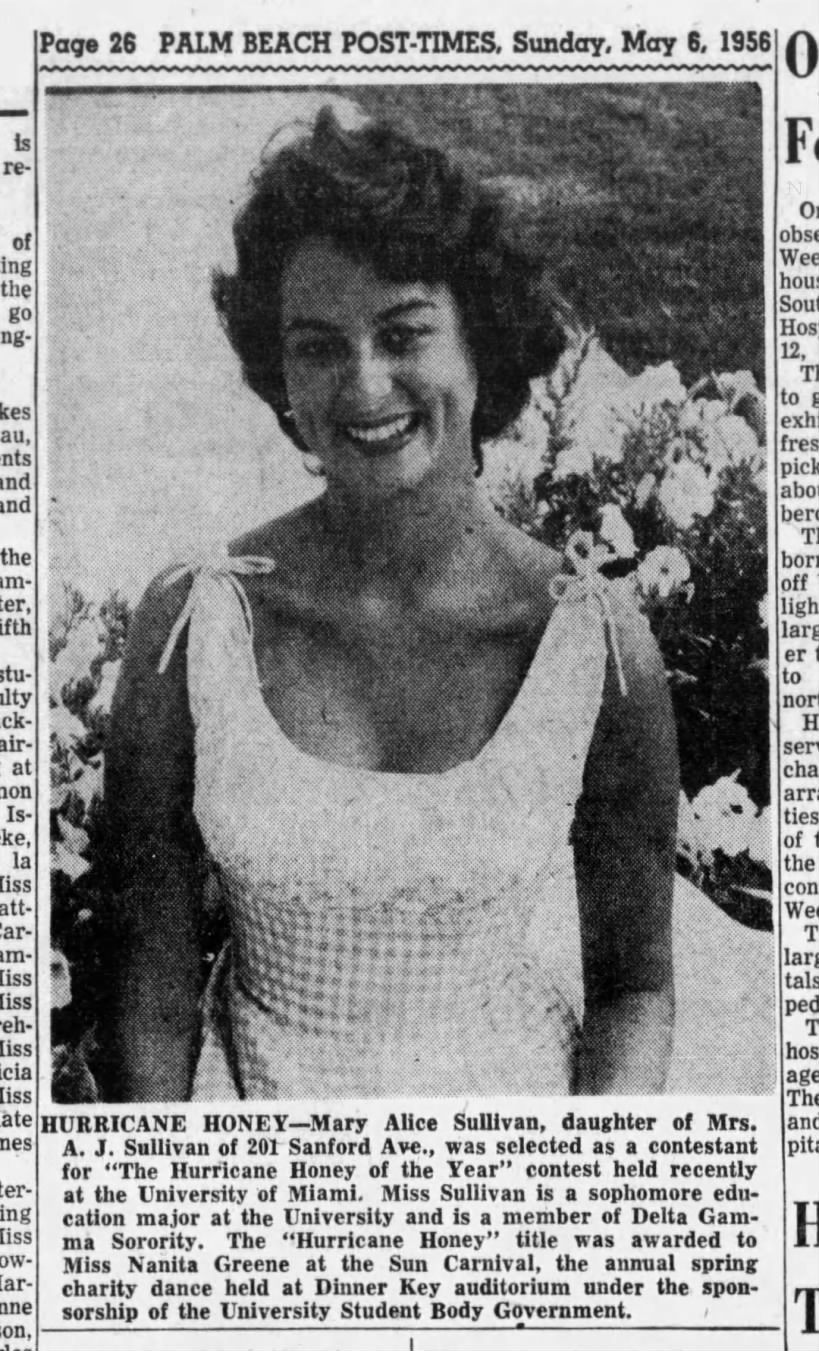

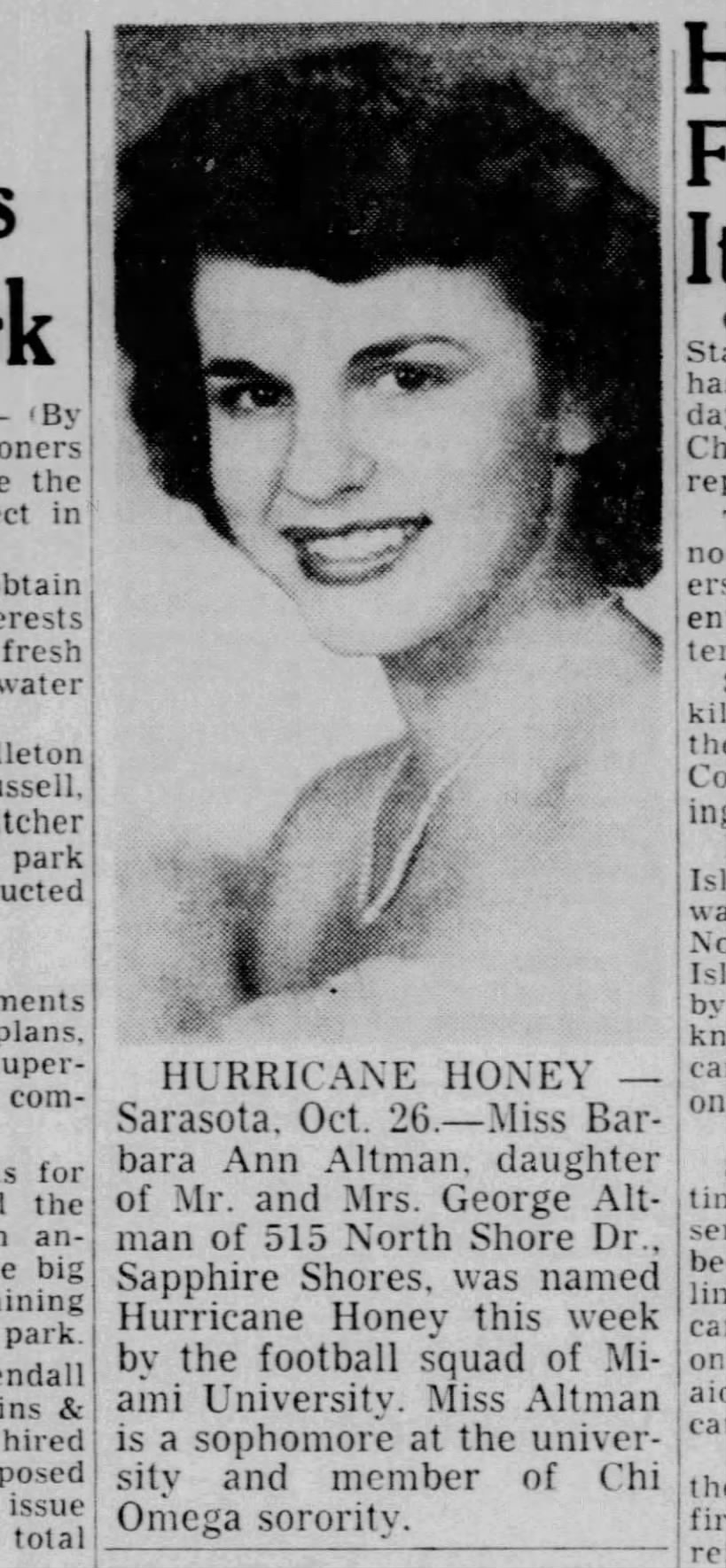




Posted By: Paul - Wed Jan 31, 2024 -
Comments (0)
Category: Awards, Prizes, Competitions and Contests, Beauty, Ugliness and Other Aesthetic Issues, Regionalism, 1950s, Weather
Using frog croaks to predict the weather
In 1975, Chinese meteorologist Chang Chi-tsai came out with "Chang's law" which codified the relationship between croaking frogs and the weather:If frogs croak after rain it will be fine weather.
It will continue to rain if frogs do not croak after successive overcast days.
Previously we've posted about how to use gnats to predict the weather.
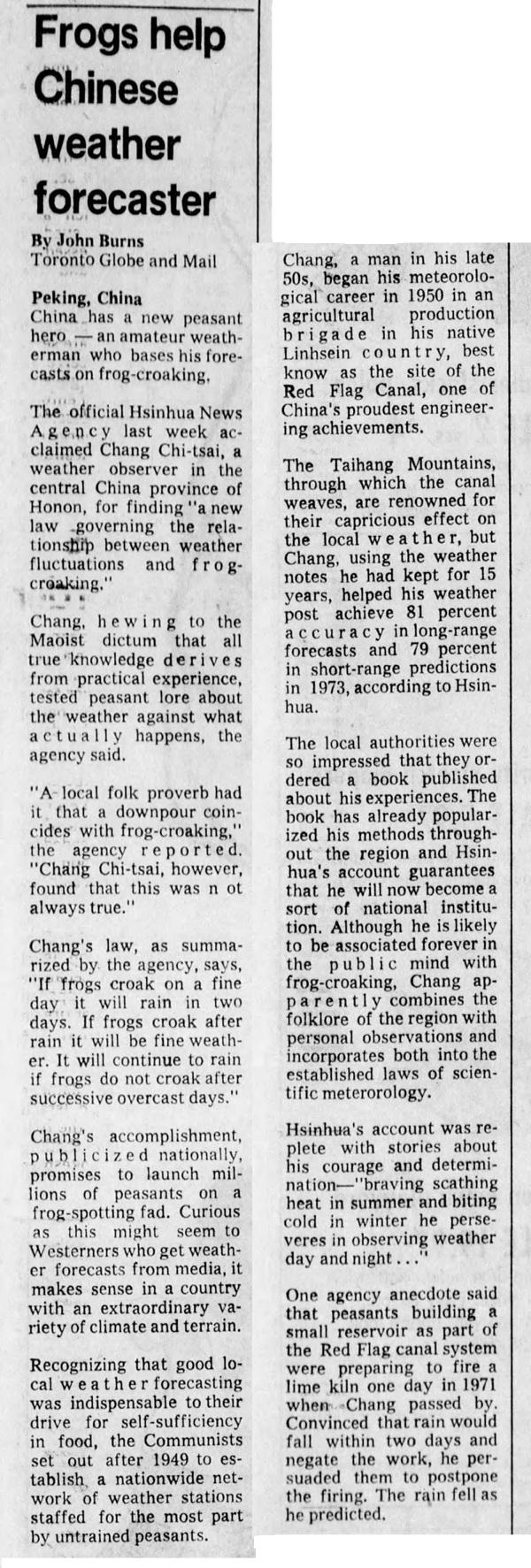
Minneapolis Star Tribune - Jan 19, 1975
Posted By: Alex - Tue Jan 09, 2024 -
Comments (2)
Category: 1970s, Asia, Weather
Doris Munday, the woman who controlled the weather
When she was in her forties, Doris Munday realized that she had the power to control the weather. All she had to do was look at a location on a map, visualize what kind of weather it needed, and then concentrate hard. The weather would obey her command.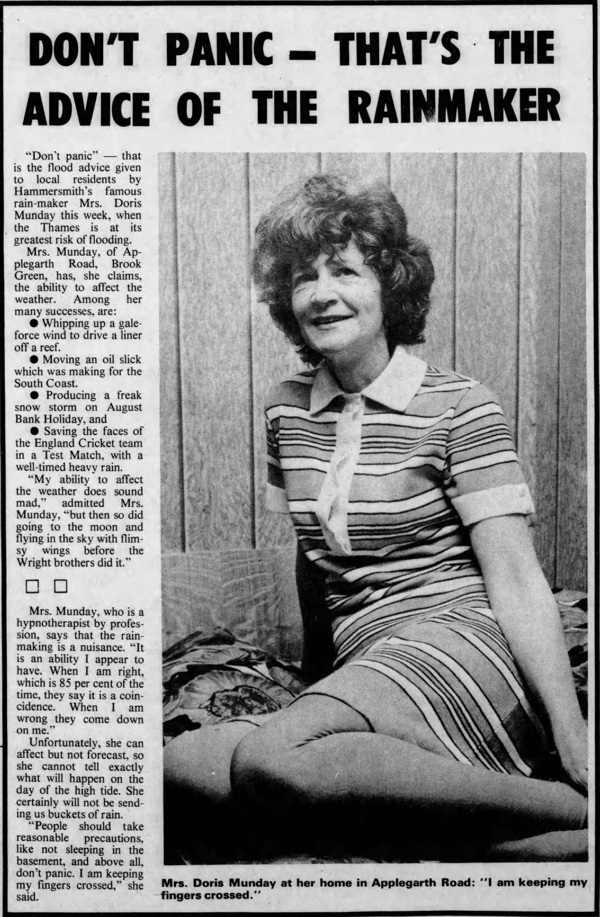
Shepherds Bush Gazette - Oct 7, 1971
This power came with a cost. Controlling the weather would leave her feeling fatigued, and it also seemed to cause her bad luck. After she had sent rain somewhere, her washing machine might blow up, or someone would run into her car.
She also felt that she didn't get enough credit for her powers. She complained, "Everyone always says when the rain falls, 'Oh well, it is a coincidence isn't it', and I don't even get a thank you for my time and trouble."
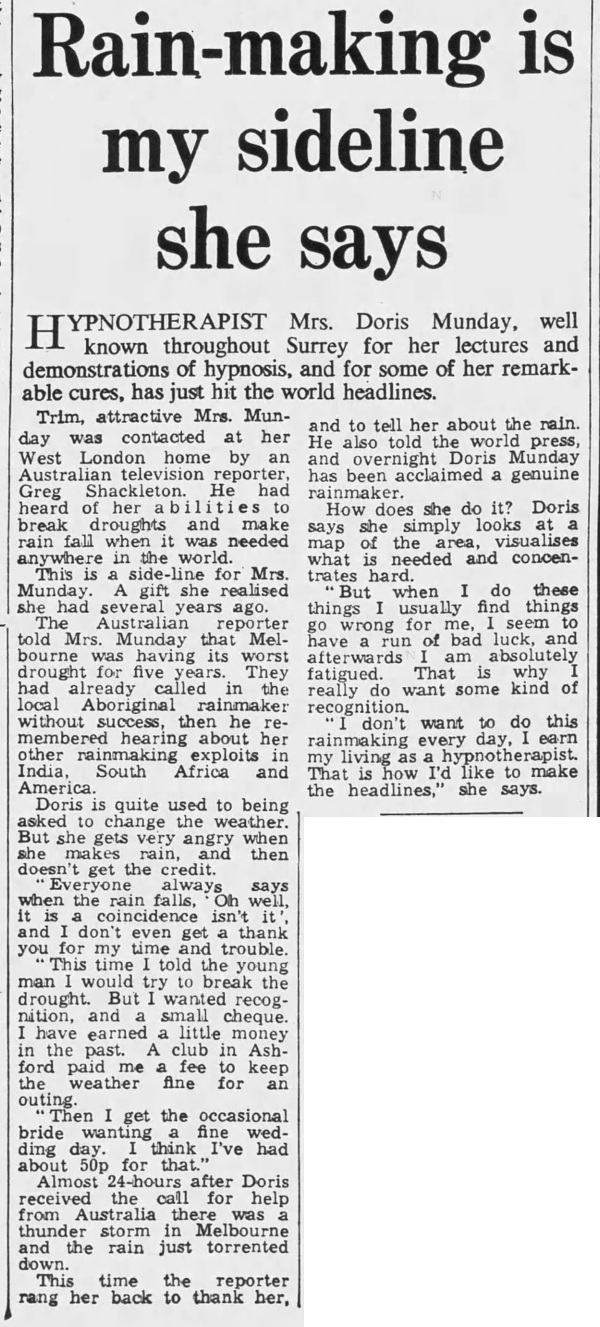
Hounslow Middlesex Chronicle - Jan 26, 1973
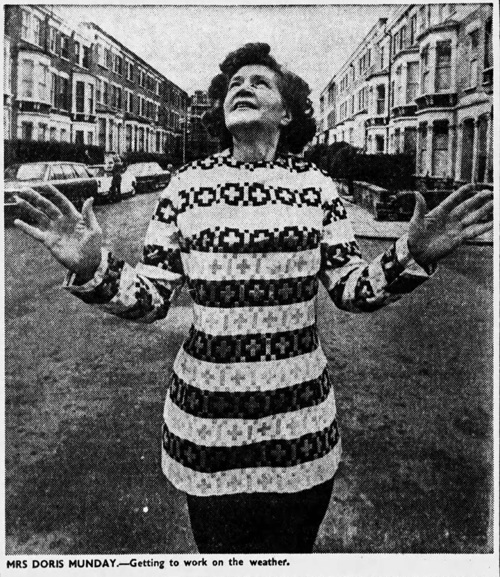
Daily Mail - Jan 24, 1973
And on occasion she made mistakes. She once wanted to send rain to South Africa, but accidentally sent it to Rhodesia instead.
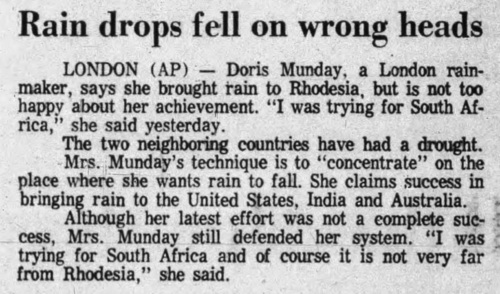
Hamilton Spectator - Jan 22, 1973
She confessed that she didn't know why her powers worked, they just did. She speculated, "I think I have stumbled on some kind of electrical force which is rarely known."
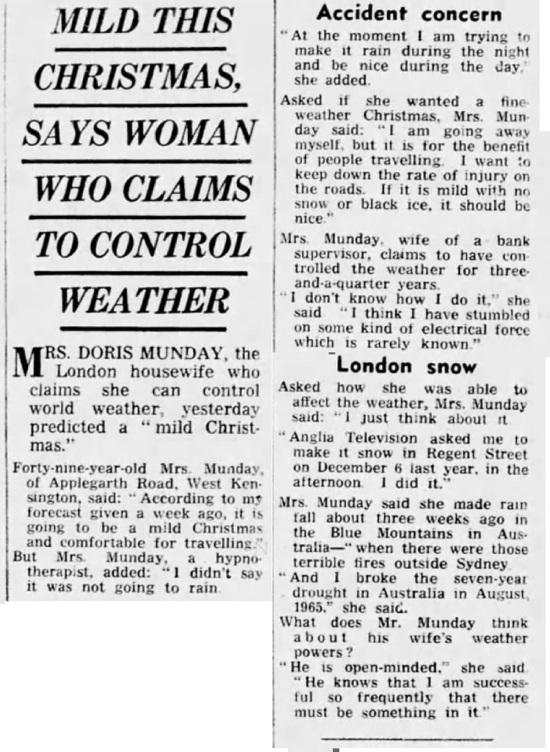
The Guardian - Dec 23, 1968
Posted By: Alex - Thu Dec 28, 2023 -
Comments (1)
Category: Eccentrics, Paranormal, Weather
Rain-Making Device
Full patent here.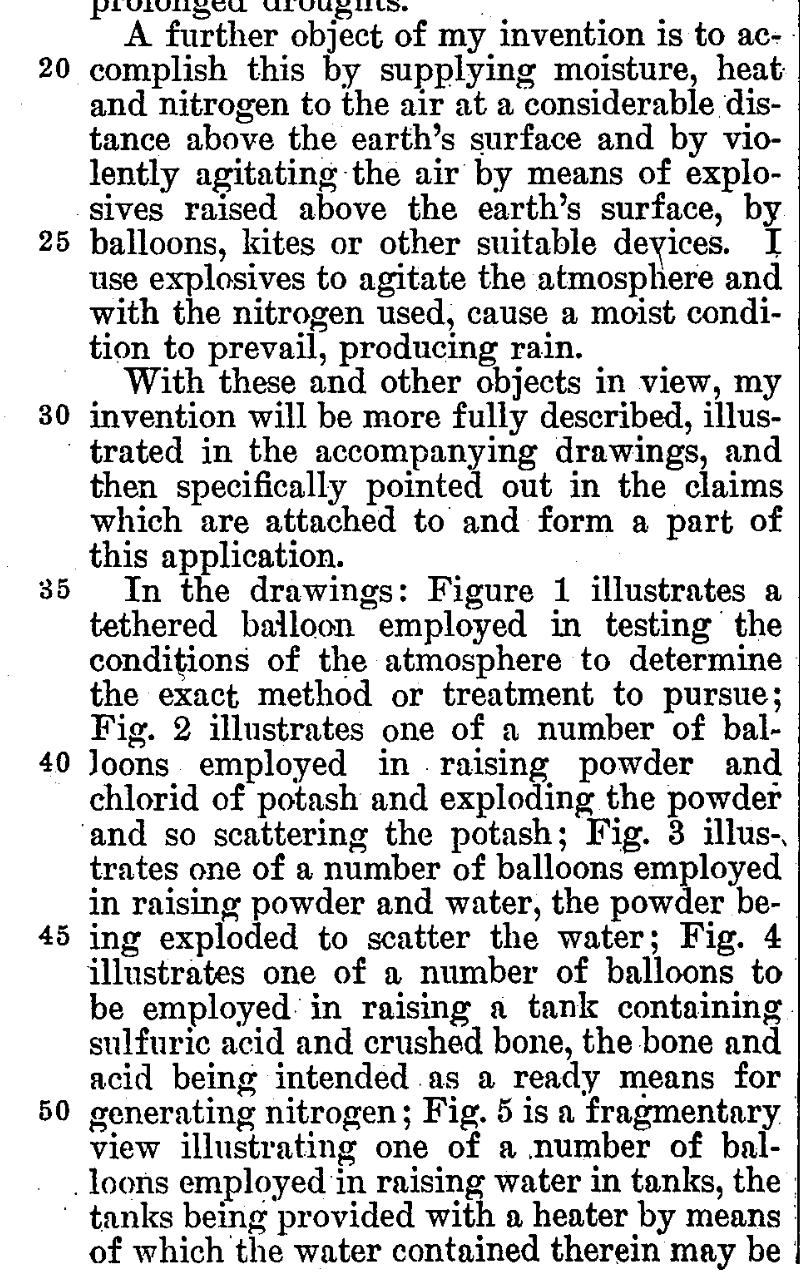
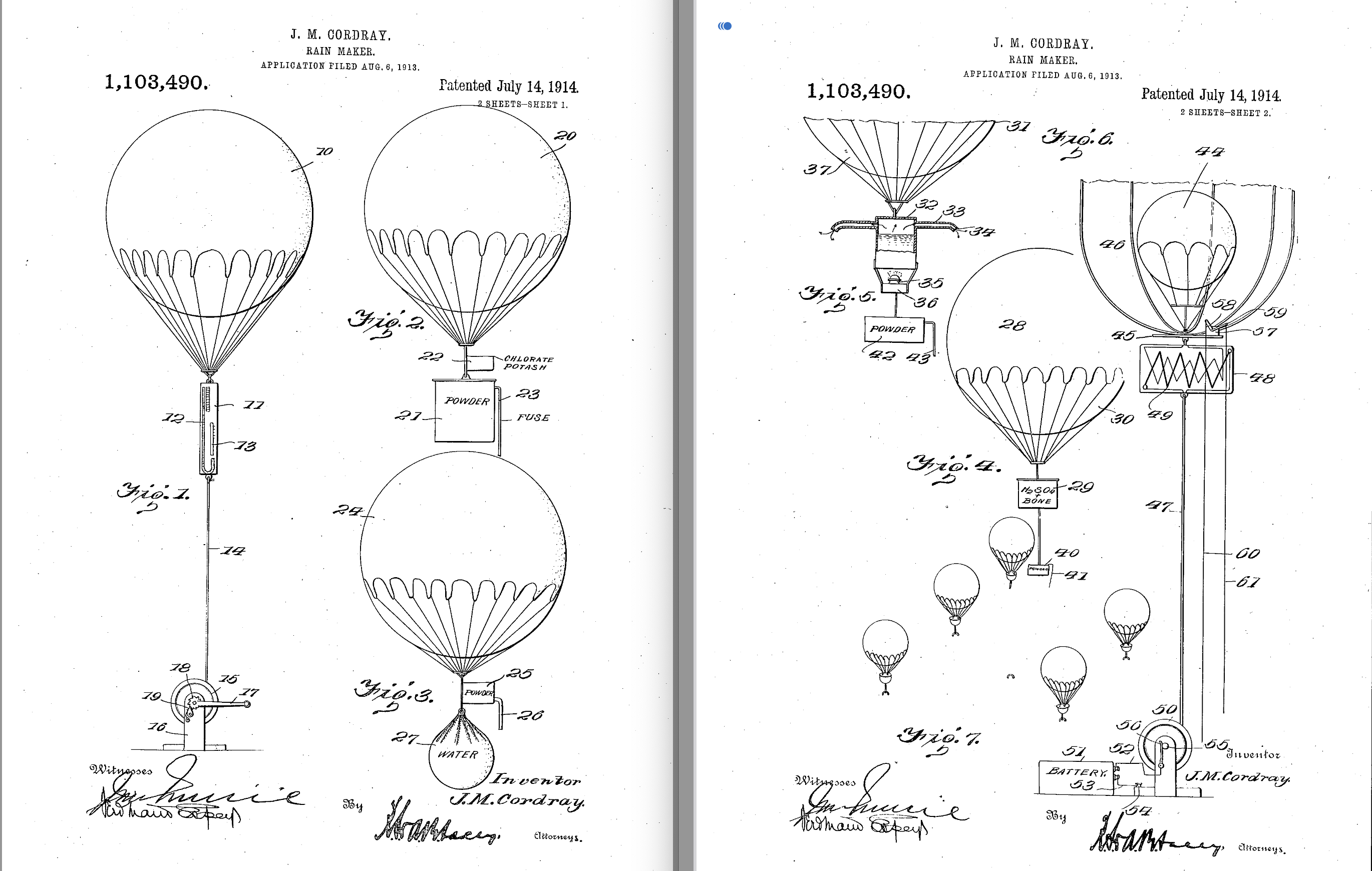
Posted By: Paul - Tue Oct 17, 2023 -
Comments (0)
Category: Inventions, Patents, 1910s, Weather
Wearable Canopy
Stylish rain gear.More info: Patent No. 1,888,909
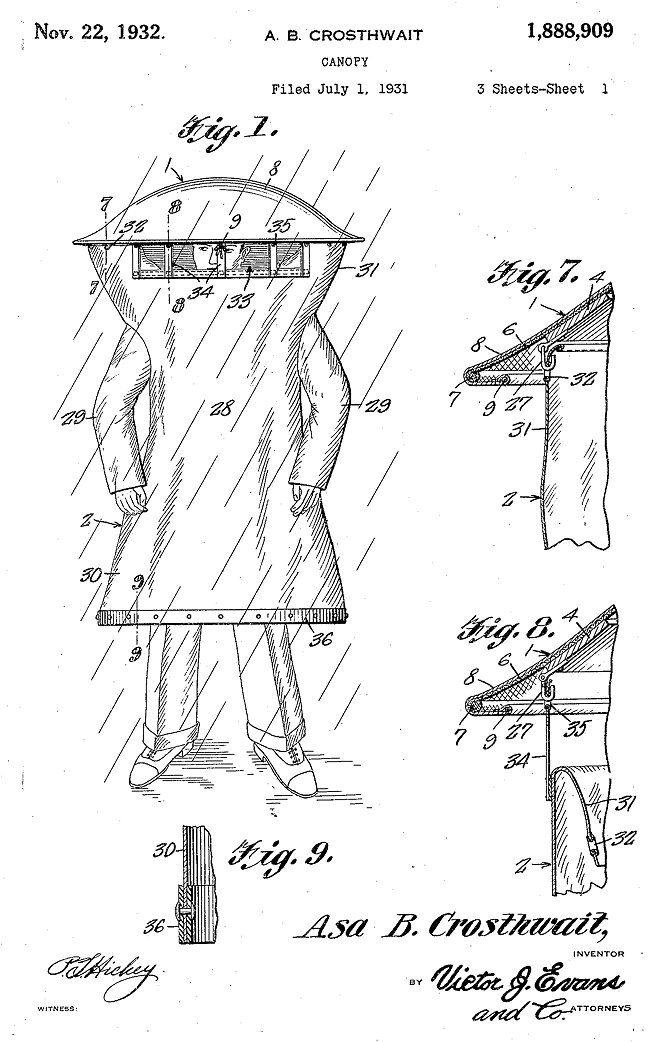
Posted By: Alex - Sun Apr 30, 2023 -
Comments (3)
Category: Fashion, Patents, 1930s, Weather
The Hurricane Party of 1969
Based on the press coverage from 1969, it sounds like the couples who remained in the path of Hurricane Camille to have a "hurricane party" certainly deserved to become Darwin Award winners (bestowed on them in 2000 by Wendy Northcutt in her Darwin Awards book)."The last time I went up to try to get them out, the water was just over the sea wall. They were having a good time and they wouldn't leave. That's the last anybody saw of them," he said.
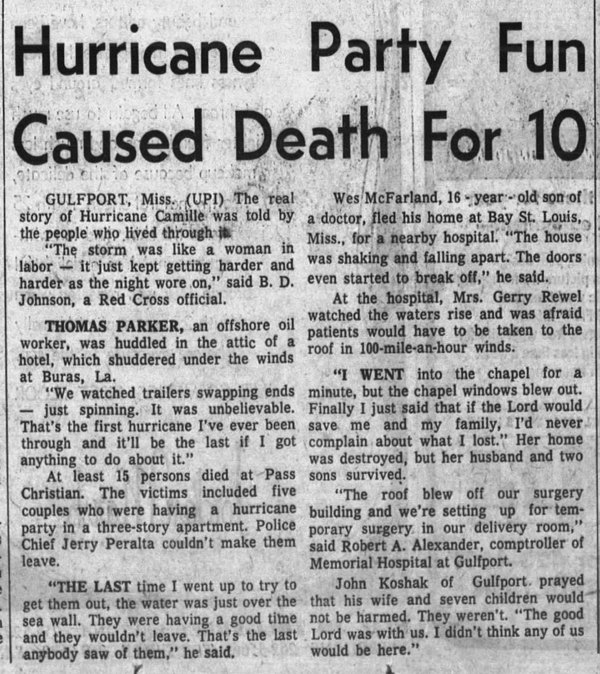
Orlando Evening Star - Aug 19, 1969
But digging deeper into the story, thirty years after the hurricane people began challenging the tale of a "hurricane party." According to the debunkers, there was no party, and the people who stayed had been told by the apartment manager that the building could withstand a hurricane because it was a designated Civil Defense shelter.
One apartment resident who survived the hurricane continued to insist that the people on the third floor had been having a party. But this woman also claimed insanity as the reason she killed her 11th husband. So not the most credible witness.
More info: Hurricane Camille party in 1969: Fact or fiction? -- Hurricane Party

image source: Acts of God: the Old farmer's almanac unpredictable guide to weather and natural disasters
Posted By: Alex - Tue Mar 21, 2023 -
Comments (6)
Category: Death, Dinners, Banquets, Parties, Tributes, Roasts and Other Celebrations, 1960s, Weather
Using gnats to predict the weather
Birds, insects, and reptiles provide a host of minor prophets, most of them with a gloomy message to proclaim. The noisy quacking of ducks and geese, the croaking of frogs, the loud singing of the missel-thrush, and the crawling of the toad across the road at dusk are one and all harbingers of rain.
The spider is the most interesting barometer. She prepares for wind by shortening the main filaments of her web. When these are unusually long, fine weather may be expected to last for 10 or 12 days. Very rarely is the web left alone for more than 24 hours. Complete cessation of work is said to be a sign of wet, but if activities are resumed during the rain it is an indication that the shower will not last long and will be followed by a spell of settled weather.
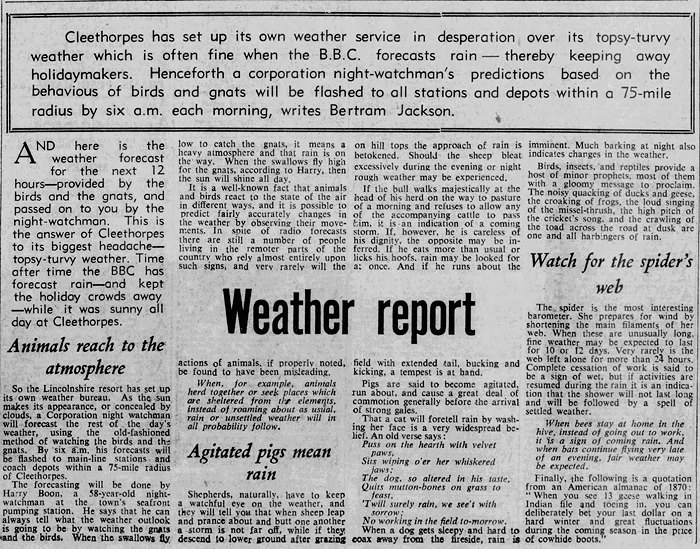
Nottingham Evening Post - July 23, 1956
click to enlarge
Posted By: Alex - Thu Feb 16, 2023 -
Comments (3)
Category: Insects and Spiders, Weather
Weather Control Commission
In 1950, Senator Clinton P. Anderson of New Mexico introduced a bill in the Senate to create a federal "Weather Control Commission" modeled after the Atomic Energy Commission. Its purpose would be to regulate and license rainmaking activities in order to ensure the "equitable distribution of precipitation among the States." It would also study military applications of weather control.Anderson didn't get his Weather Control Commission, though in 1953 the federal government did create an Advisory Committee on Weather Control. And of course there are all those conspiracy theories alleging that the government is using the HAARP station up in Alaska to control the weather.
More info: Congressional Hearings, March 1951
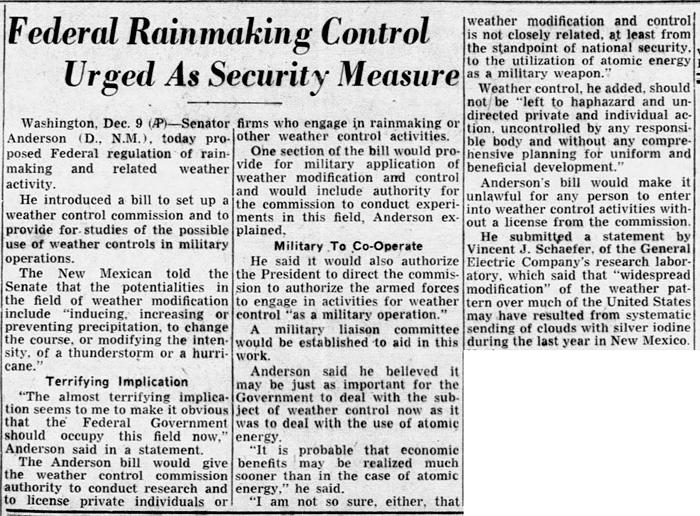
Baltimore Sun - Dec 10, 1950
Posted By: Alex - Mon Oct 03, 2022 -
Comments (4)
Category: Government, 1950s, Weather
Anti-Hurricane Barges
Back in 2005, MIT researcher Moshe Alamaro came up with an oddball idea to fight hurricanes: use barges equipped with upward-pointing jet engines to create tropical storms in their path. Details from The Salina Journal (July 2, 2005):After operating for about half a day, the updraft would create a tropical storm of its own. This would cool the water through which the advancing hurricane would move and so rob a potentially deadly storm of some strength. Alamaro said there's more than an ample supply of unused jet engines on the mothballed fleets of Cold War bombers now rusting in desert junkyards in Arizona and Nevada.
Alamaro said a 10 percent reduction in a hurricane's wind speed would result in a 50 percent reduction in its power when the storm hits landfall. If it works the way Alamaro and his colleagues suggest, residents of the Atlantic and Caribbean shores might one day experience more tropical storms, but not so many hurricanes.
"What we want to do is create several tropical storms to replace the hurricane. It would not stop it completely," he said.
Maybe this would work. Or maybe the artificial tropical storms would themselves turn into hurricanes? Since Alamaro estimated it would cost around $1 billion a year to do this, it's unlikely his idea will be tested any time soon.
More info: The Economist - June 11, 2005

Posted By: Alex - Sat Oct 01, 2022 -
Comments (1)
Category: Weather

| Who We Are |
|---|
| Alex Boese Alex is the creator and curator of the Museum of Hoaxes. He's also the author of various weird, non-fiction, science-themed books such as Elephants on Acid and Psychedelic Apes. Paul Di Filippo Paul has been paid to put weird ideas into fictional form for over thirty years, in his career as a noted science fiction writer. He has recently begun blogging on many curious topics with three fellow writers at The Inferior 4+1. Contact Us |




